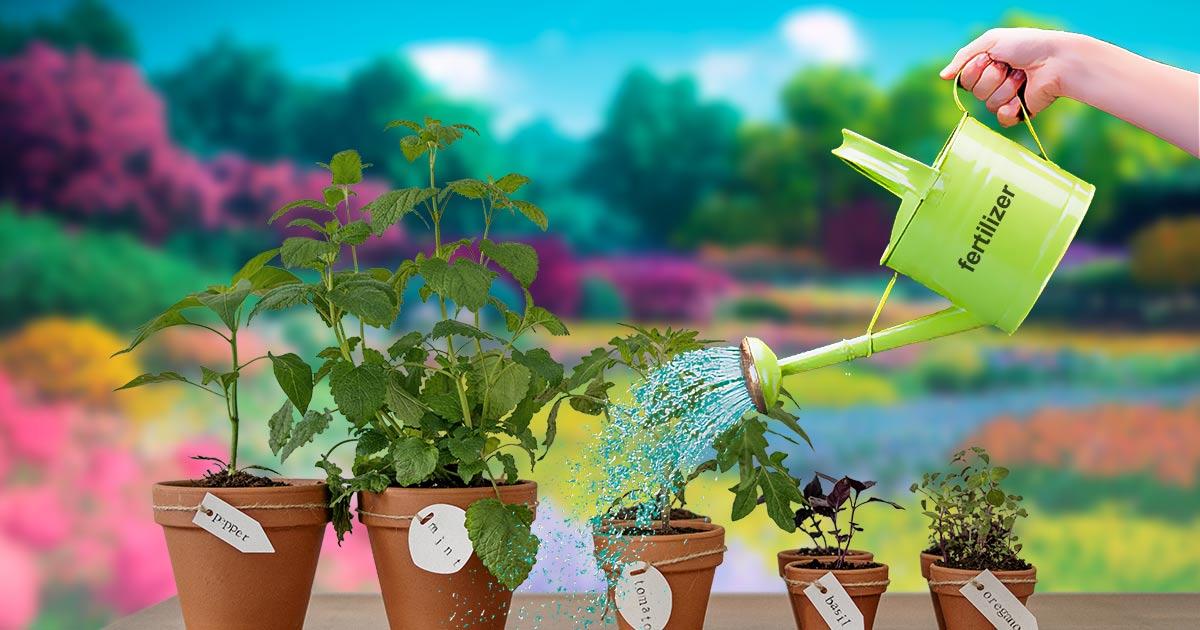Supercharge Your Plants with Homemade Fertilizer for Plants

Are your plants suffering from the consequences of either too much or too little fertilization? Don’t worry! You can create your own homemade fertilizers using simple ingredients from your kitchen. Just like humans and animals, plants have specific needs, including sunlight, water, and soil, but they can’t communicate them to us. That’s why it’s essential for us to take good care of them.
Soil plays a vital role in plant growth, as it provides the necessary nutrients and nourishment. It’s like food for us, humans. By fertilizing the soil, you give your plants an extra boost of nutrients, similar to enjoying a nutritious meal when your body lacks essential elements. Take a look at the following list of homemade fertilizer for plants. You’ll find that these ingredients are readily available in your kitchen and will effectively enhance the health of your houseplants:
Eggshells
Have you ever considered sharing your breakfast eggs with your plants? Just like you, plants can benefit from the calcium and potassium found in eggshells. Calcium specifically helps plants develop sturdy cell structures. If you want to use eggshells for your plants, start by emptying the eggs and cleaning the shells thoroughly. Then, grab a mortar and pestle and crush the shells into fine pieces, making it the perfect homemade fertilizer for potted plants. Finally, distribute the crushed shells evenly across the soil’s surface. Over time, the soil will naturally absorb the beneficial properties of the shells, benefiting your plants in the process.
Grass Clippings
After you’ve finished mowing your lawn and gathered the excess grass, you can put those clippings to good use as a DIY fertilizer for both your indoor and outdoor plants. It’s quite surprising that grass clippings contain the essential macronutrients your plants need the most: Nitrogen, Phosphorus, and Potassium. To utilize them, evenly distribute the chopped grass clippings over the lower layer of the soil, and then cover them with the remaining soil. Given that grass clippings have a high water content of around 80%, they will naturally decompose over time, releasing their beneficial nutrients into the soil.
Coffee
If you happen to have acid-loving plants such as nasturtium, daffodils, marigold, sweet potato, parsley, or potatoes in your home, then this fertilizer should be at the top of your gardening list. Coffee, which is readily available in every kitchen and is one of the best natural fertilizer options, has the remarkable ability to provide the necessary nitrogen and maintain the ideal acid level for such plants. You have two options when it comes to using coffee grounds as fertilizer. Firstly, you can evenly scatter the coffee grounds across the soil’s surface. Alternatively, you can dilute the grounds in fresh water and gently pour the mixture over your plants, ensuring they receive the benefits of this natural fertilizer.
Banana Peels
Do you often discard banana peels without realizing how valuable they can be for your garden? Little do we know that our plants can greatly benefit from these nutrient-rich peels. Packed with phosphorus and potassium, banana peels can help strengthen your plants, enhance fruit production, and provide protection against diseases. The next time you enjoy a banana, remember to save the peel for your garden. There are two simple ways to incorporate banana peels into your soil. You can either chop them up and bury them deep within the soil or soak them in fresh water for 3-4 days and then use the infused water to spray over your plants. Either method will allow your plants to absorb the beneficial properties of the banana peels and thrive as a result.
Tea
Have you ever thought about using tea as a fertilizer for your plants? Similar to coffee, tea is a homemade plant fertilizer that contains beneficial compounds like citric and tannic acid, which help maintain the ideal pH levels in the soil. Considering that tea is a staple in many Indian households, it’s a convenient option for nurturing your indoor plants as well. After you finish brewing your tea, whether it’s loose leaf or from a tea bag, strain the leaves and allow them to cool. If you’re using a tea bag, simply remove it from your drink and cut it open to cool. Once cooled, mix these tea leaves with the soil around your houseplant. Alternatively, you can soak fresh tea leaves and then pour the infused water directly into the soil. Both methods serve as excellent DIY fertilizers that can benefit your plants significantly.
Vinegar
Did you know that vinegar can serve as a fertilizer to raise the alkaline level in your container plants? Not only does it help increase alkalinity, but it also acts as a natural deterrent for ants and assists in weed control. However, it’s important not to pour white vinegar directly into the soil. Instead, dilute 1 cup of vinegar in 2 gallons of fresh water and use this mixture to water your plants. By following this method, you can ensure the vinegar is applied safely and effectively. Give it a try, and you’ll see why this is considered one of the best DIY fertilizers for your plants.
Which is the Best Natural Fertilizer For You?
By utilizing these easy DIY fertilizers made from ingredients found in your kitchen, you can give your plants the care and nourishment they need to thrive. Whether it’s the calcium-rich eggshells, nutrient-packed grass clippings, pH-balancing coffee grounds, potassium-loaded banana peels, beneficial tea leaves, or alkaline-boosting vinegar, each of these natural fertilizers offers unique benefits for your plants. By incorporating them into your gardening routine, you can witness your plants growing stronger, producing more vibrant blooms or fruitful harvests, and warding off diseases. Embrace the power of homemade fertilizers and watch your plants flourish with vitality and beauty. Your kitchen holds the key to transforming your garden into a thriving haven of natural growth and abundance.
